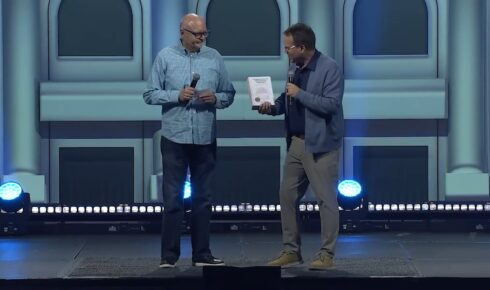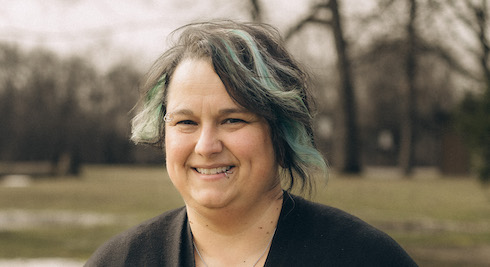I begged my mother to let me ride along. Our pastor had asked if she would pick up Aimee Semple McPherson from the airport, and I wanted to see this lady evangelist up close and personal. We lived in Spokane, Wash., and Sister McPherson was scheduled to speak that night at a citywide revival meeting.
Sister McPherson was personable and kind. She was in command of every detail about the service and conversed with my mother about the various details surrounding the evening’s events.
When I saw her preach that night, I was impressed by her dynamic personality and the way she expressed herself. She had an unusual and compelling voice that just made you want to listen to her. She had an exceptional way of describing details as she talked about people and stories from the Bible; you felt like you were right there.
More than anything, I remember that Sister McPherson followed her singular purpose in life: to win souls for the kingdom of God. Everything she did focused on that one calling.
My mother, too, was impressed with her, and in 1941 we moved to Los Angeles so my mother could attend L.I.F.E. Bible College (now called Life Pacific College). From 1941 to 1944, I tagged along as my mother sat in classes with Sister McPherson and other excellent teachers of the Word. I remember seeing Sister McPherson stop by a chapel service and lead the students in song or prayer.
One of the most intriguing features about Sister McPherson was her eyes. They were always moving and searching the room for what God was doing. I think she looked at every student and wondered what each one would accomplish for the kingdom of God after graduation. During a service, she constantly scanned the crowd, I’m sure trying to recognize the people God wanted to save or heal.
Once, during World War II, Sister McPherson spotted a uniformed serviceman in the audience and called him to the platform. His name was Ralph Hammon, and he was about to be shipped off to battle. She prayed for Ralph, and the audience clapped wildly when he saluted the flag and the congregation. A few years later, Ralph returned to Los Angeles and eventually became a teacher at L.I.F.E. while I was a student there.
Sister McPherson established the precedent of honoring our servicemen, and our youth group liked to join in when we could. After church on Sunday nights, the youth group often congregated in the living room of her parsonage for snacks and to sing together. Her grand piano sat in the middle of the living room, and on top was a basket with the names of soldiers serving in the war.
Regularly, we would pull a name out of the basket and pray for that particular soldier. Then, he would be given a free phone call home from wherever in the world he was serving. Back then, that was a pretty expensive phone call, and was quite a nice gift.
Sister McPherson always preached the gospel with passion and conviction. I remember being part of a few of her illustrated sermons. One in particular called for three of us to “descend into hell”—or, in this case, the baptistery on the stage. It was loaded with dry ice to make an eerie, dense fog. The three of us were to step into the baptistery and walk down the steps until the audience could not see us any longer.
Before service that night, Sister McPherson reminded us that people in the third balcony could see directly into the baptistery, and so we would need to crouch down low and get up close to the front of the baptistery so no one could see us once we descended into hell. Afterward, she patted my head and spoke kindly. I wasn’t sure if I had done a good job or if she had been able to see the top of my head as I hid in the baptistery.
Dr. Charles Walkem helped Sister McPherson write and arrange her music. During a service one Sunday, she asked him to go retrieve a piece of music they had worked on. Trying to be inconspicuous, he stepped behind the curtains at the back of the stage and nearly fell in the baptistery. It was full of water, and his shoe filled quickly. When he returned to the stage to sit at the piano to play the song, his foot squished with water as he stepped on the pedals.
I have many fond memories of being in the youth group at Angelus Temple during Sister McPherson’s ministry, and then later of being a student at L.I.F.E. Bible College. My husband and I met while attending the college, and later we pastored Angelus Temple together.
The legacy of Sister McPherson continues to this day in the lives of countless people who were impacted by her life and ministry. I count it a privilege to be among those people.


